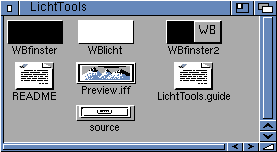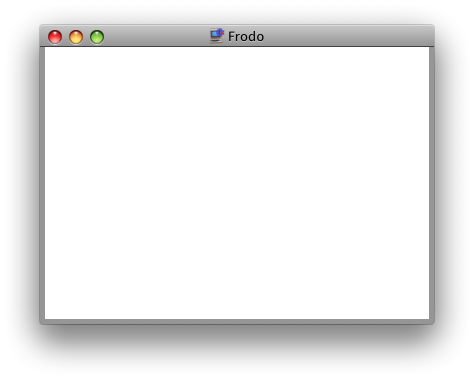
About | Download | Usage | Screenshots | Forum | Development
"Let there be Licht..."
LichtTools simulates a bulb, enabling the user to read books in front of the screen without other light sources available. When used on mobile platforms LichtTools acts as flashlight.
LichtTools was originally designed and developed for AmigaOS by Michael Gehmair and has later been ported to other platforms by Thomas Aglassinger and Paul Groke. It is distributed under the BSD License.
You can download the version matching your platform from the download page. So far, LichtTools is available for AmigaOS, Android, iPhone, platforms supporting Java, Windows, and various others.
If no special version exists for your platform, try to use the Java version as it should work with most reasonably modern computers. Alternatively, you can use the HTML port which however will leave a few none white pixels on your screen due to the browser user interface. Some browser do support a fullscreen mode, so you might be able to work around this.
Originally LichtTools was developed for AmigaOS. The distribution contains a detailed Amigaguide manual explaining installation and usage.

LichtTools can both be started from the CLI or Workbench.
 Currently LichtTools only is
available as
Xcode project, so you need
the iPhone SDK to compile and launch it. Refer to the section on Development on how to obtain the source code
from the Subversion repository.
Currently LichtTools only is
available as
Xcode project, so you need
the iPhone SDK to compile and launch it. Refer to the section on Development on how to obtain the source code
from the Subversion repository.
Once built and installed, LichtTools shows up in the application menu. To switch the light off and on again, tap the screen anywhere. To go to the disco, shake your iPhone. To quit, tap the "Home" button.
LichtTools comes in a single JAR file named LichtTools.jar which on most platforms can be launched by simply double clicking it. Alternatively you can start by entering the following command:
After being launched, LichtTools immediately turns on the light. The following keyboard commands are supported:
LichtTools requires Java 1.4 or later and a platform supporting fullscreen mode.
![]() The Windows port comes as a
ZIP archive including LichtTools.exe which you can copy in any folder
you want and start by simply double clicking it. The
keyboard commands are the same as with the Java
version.
The Windows port comes as a
ZIP archive including LichtTools.exe which you can copy in any folder
you want and start by simply double clicking it. The
keyboard commands are the same as with the Java
version.
It
supports multiple monitors, so you can simulate several bulbs with it.
As a special feature, going to the disco (by pressing "d") uses
different colors for each
monitor, really bringing back the time when the Bee Gees ruled the
world and John Travolta was slim.
More simple ports to various other platforms can be found in the Subversion Repository in the trunk of the various module as source code only. Assuming some familiarity with the respective platform it should be easy to make them work.
Here are a few screenshot to demonstrate the power and flexibility of LichtTools. Click on the images to zoom in.
 |
LichtTools Java running under Mac OS X 10.5. Look at the shiny white! |
 |
LichtTools Java running under Ubuntu Linux. Look at the nice color=0xffffff! |
 |
LichtTools Java running under Windows Vista. Look at the improved white created by Aero and DirectX 10. Do you need any more reasons to upgrade from the dull Windows XP? |
 |
The LichtTools preview image shipping with the Amiga distribution (converted from IFF ILBM to PNG to make it viewable in web browsers). Switch MultiView to fullscreen and it almost feels like the real thing. |

|
LichtTools on iPhone in landscape mode. Who needs flashlights? |
 |
Frodo running LichtTools for Commodore 64. Due to 1337 c0diNg sk1llz, the results are almost indistinguishable from versions on modern platforms. Ph33r d4 p0w4 oF 8 biT, n00bz! |
The LichtTools project site is hosted by SourceForge.net and contains the resources used for the development of LichtTools.
The source code is available from a Subversion repository which you can browse at http://lichttools.svn.sourceforge.net/viewvc/lichttools/. To check out a module from the repository, use
where the text MODULE should be replaced by one of:
In case you port LichtTools to an additional platform or fix a bug, feel free to submit your changes using the patch tracker.